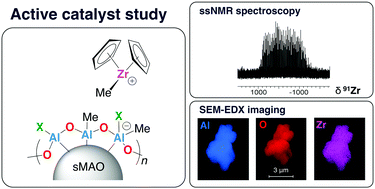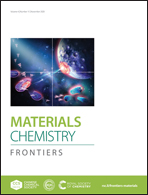Physicochemical surface-structure studies of highly active zirconocene polymerisation catalysts on solid polymethylaluminoxane activating supports†
Abstract
Physicochemical surface-structure studies of highly active slurry-phase ethylene polymerisation catalysts has been performed. Zirconocene complexes immobilised on solid polymethylaluminoxane (sMAO) (sMAO–Cp2ZrX2), have been investigated using SEM-EDX, diffuse reflectance FT-IR (DRIFT) and high field (21.1 T) solid state NMR (ssNMR) spectroscopy. The data suggest a common surface-bound cationic methylzirconocene is the catalytically active species. 91Zr solid sate NMR spectra of sMAO–Cp2ZrCl2 and sMAO–Cp2ZrMe2 are consistent with a common surface-bound Zr environment. However, variation of the σ-donor (X) groups on the metallocene precatalyst leads to significant differences in polymerisation activity. We report evidence for X group transfer from the precatalyst complex onto the surface of the aluminoxane support, which in the case of X = C6F5, results in a 38% increase in activity.

- This article is part of the themed collection: Recent Open Access Articles in Frontiers Journals


 Please wait while we load your content...
Please wait while we load your content...